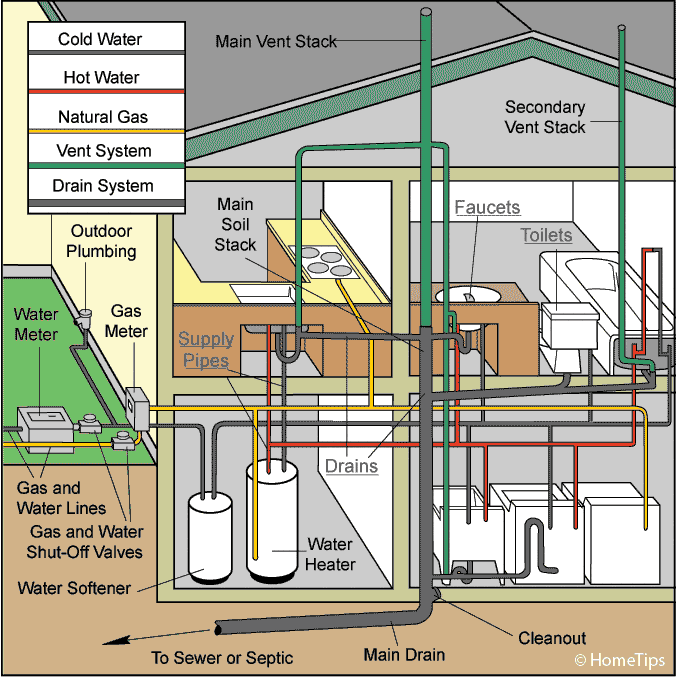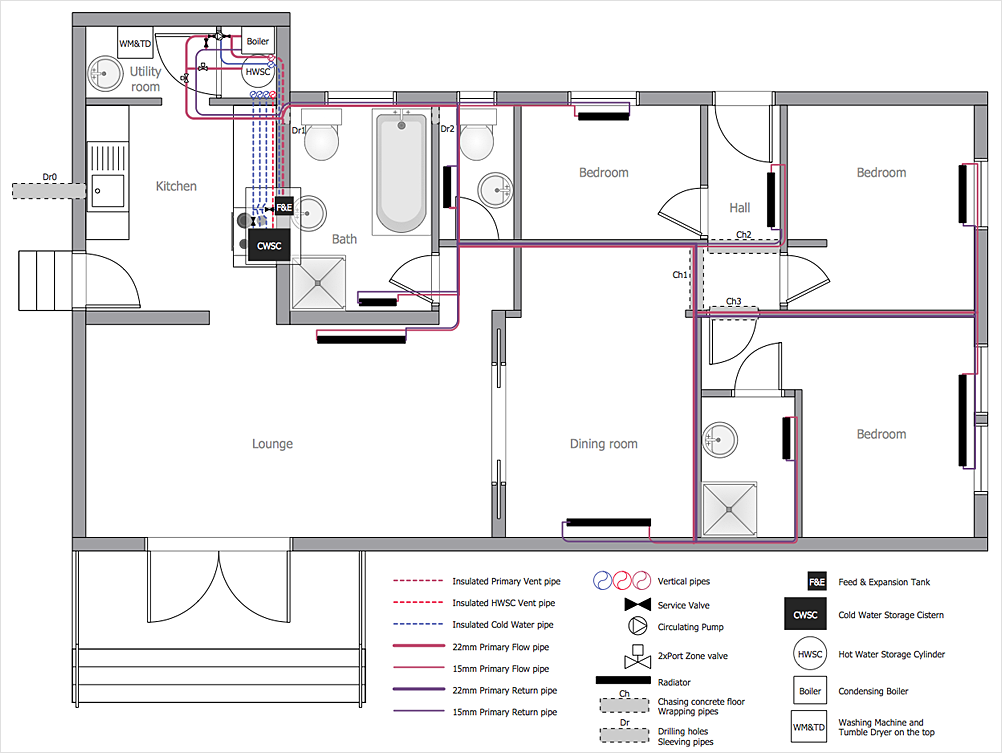Table of Content
The air pressure forces the trap seal up the pipe into the fixture. If the pressure is great enough, the seal is blown out of the fixture entirely. Figures 9.8 and 9.9 illustrate the potential for this type of problem. Large water flow past the vent can aspirate the water from the trap, while water flow approaching the trap can blow the water out of the trap. A house drain should be sloped toward the sewer to ensure scouring of the drain. The usual pitch of a house or building sewer is a ¼-inch drop in 1 foot of length.

The plumber will need to spend more time plumbing your house and even require special tools. The process is used to determine when additional treatment is needed. Water that is out of balance can result in many negative outcomes, from toxic water to damaged and ruined equipment. If a waste pipe is placed vertically after the fixture trap, as in an S-trap, the wastewater continues to flow after the fixture is emptied and clears the trap. This is caused by the pressure of air on the water of the fixture being greater than the pressure of air in the waste pipe.
Plumbing a House From Scratch: Everything You Need to Know
Hiring a contractor or handyperson to perform drywall, plaster, wood or concrete repairs costs between $40 and $120 per hour. The project requires experience and can take much longer than expected. Expect to pay labor costs of between $60 and $200 per hour for repiping projects. This can cause clogs and pressure build-ups which can make the copper pipe burst. One of the main reasons homeowners choose copper over other materials is its history. That, alone, can make your plumbing installation a lot cheaper.
Weed or pest killer attachments that hook to garden hoses work on the same principle. Figure 9.17 shows an outside hose bib equipped with a vacuum breaker. In the areas of the United States that freeze, these vacuum breakers must be removed because they trap water in the area of the line that can freeze and burst. Many vacuum breakers sold today automatically drain to prevent freeze damage.
Average Cost to Replace Galvanized Pipes
For a small project, the cost may be a few hundred dollars, while for a large project the cost could be several thousand dollars. There are many factors that can affect the cost of new construction plumbing, such as the type of materials used, the complexity of the project, and the location. If you decide to install a new plumbing system in the house, you should invest in enough shut-off valves. Preferably every individual connection should have a separate valve. When you move to a new home with a functioning plumbing system, ensure you know where the shut-off valves are.

The Y-fitting is used to eliminate, as much as possible, the deposit of solids in or near the connection. Recommended minimum sizes of fixture drains are shown in Table 9.2 . Most tankless models have a life expectancy of more than 20 years.
How Much Does Plumbing Cost For a New House?
Your overall prices depend on the type of materials used, the home's age, and the square footage of your plumbing project. What's the right pipe for water supply, drainage, sewer, and even the exterior? The answer is not as clear as it was in the past when the main pipe choices were just galvanized steel or cast iron.

You will need to install a 2” ABS flexible P-trap under the tub drain. P-traps are for creating a liquid plug in the drain line that keeps odors from wafting from the fixture into the room. The tub and sink lines will Y into each other and eventually connect with the larger 3” toilet drain line.
It is extremely flexible, can easily curve around corners and obstructions, and has high durability and low corrosion. Since the material expands and contracts, it is also highly freeze resistant and allows for fewer fittings than rigid plumbing types. The cost to repipe a house with PEX tubing is $0.40 to $0.50 per linear foot depending on the size of the house and the extent of replumbing you’re doing. Repiping a 2,000 square foot home with PEX costs between $2,000 and $4,000.
Improperly vented fixtures will drain slowly and clog often. They also present a health risk if highly toxic and explosive sewer gases enter the home. Correct venting is shown in Figures 9.10 , 9.11, 9.12, 9.13, 9.14, and 9.15; incorrect venting is shown in Figures 9.8 and 9.9. A wet vent can result in one of the traps siphoning the other dry when large volumes of water are poured down the drain.
This is part of the nature of the materials that make up the tubing. If PEX receives exposure to the sun before it’s installed, it can deteriorate. With copper piping, the metal is too strong to break or receive damage from chewing rodents. If you need a plumber to fix a specific fixture, then you don’t need to turn off the water to the entire home. If you ever need to replace your plumbing in the future, then using PEX will ensure that as little damage as possible happens to your walls.
Figure 9.12 shows a typical installation of a wall-hung plumbing unit. This type of ventilation is generally used for sinks, drinking fountains, and so forth. Air admittance valves are often used for individual fixtures. Figure 9.13 shows a typical installation of a bathtub or shower ventilation system. Figure 9.14 shows the proper vent connection for toilet fixtures and Figure 9.15 shows a janitor’s sink or slop sink that has the proper P-trap. For the plumbing fixture to work properly, it must be vented as in Figures 9.13 and 9.14.
Copper pipes are durable, corrosion-resistant, and can be used for hot and cold water. PEX seems to be replacing copper pipes at a high rate since it is less expensive, more flexible, and easier to install. A new house can cost between $2,000 and $15,000 to install new plumbing or replace an existing one.

No comments:
Post a Comment